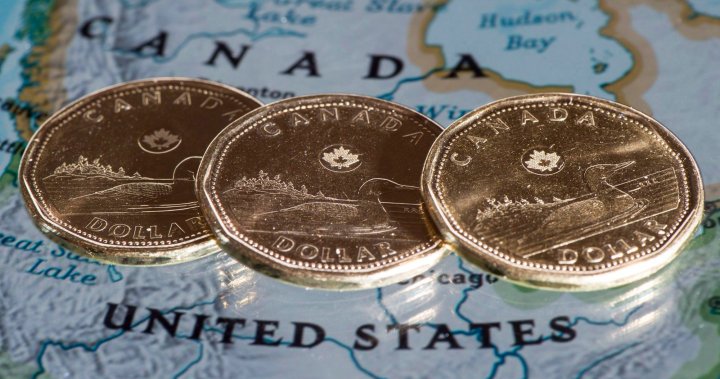The Canadian dollar, commonly known as the loonie, is facing a period of weakness, trading at approximately 69.5 cents against the US dollar, a four-year low. This depreciation presents challenges for Canadians purchasing goods and services priced in US dollars, impacting cross-border shopping, travel, and even grocery bills. The decline is attributed to various factors, including a widening gap in policy rates between the Bank of Canada and the US Federal Reserve, as well as uncertainties surrounding potential US trade policies and political developments. While the outlook for the loonie in 2025 remains uncertain, forecasts suggest a potential economic rebound in the latter half of the year, which could provide some support to the currency. In the meantime, Canadians are advised to adopt strategies to mitigate the impact of the weak loonie and potentially even leverage the situation to their advantage.
The weakening loonie directly affects Canadian consumers in several ways. Imports from the US, including electronics, clothing, and food, become more expensive, adding further pressure to already inflated grocery bills. Travel to the US becomes more costly, as the exchange rate diminishes the purchasing power of Canadian dollars. To counteract these effects, consumers are encouraged to prioritize domestically produced goods and services. Checking food labels for local sourcing and exploring vacation options within Canada can help reduce reliance on US-priced goods and services. For those who must travel or shop in the US, several strategies can mitigate the impact of the weak exchange rate. Utilizing credit cards that waive foreign transaction fees can eliminate the additional 2-3% charge typically applied to US dollar purchases. Setting up a US dollar-denominated bank account can also minimize conversion fees for frequent cross-border transactions. Furthermore, maximizing credit card perks and travel points can offset some of the increased costs associated with US travel and purchases.
Canadian investors also face challenges amidst the loonie’s decline, particularly when seeking exposure to high-growth US stocks. However, experts maintain that investing in the US market remains crucial for long-term growth. While a weaker loonie means each Canadian dollar buys fewer US assets, the focus should be on the overall investment return, which ideally outpaces any losses from currency fluctuations. A stable exchange rate, rather than a rapidly appreciating loonie, is preferred for investors, as it allows for predictable returns when converting US investments back to Canadian dollars. The impact of the exchange rate on individual companies varies depending on their business focus. Canadian companies that primarily import from the US face increased costs, while those exporting to the US benefit from a price advantage due to the stronger US dollar, potentially boosting demand for their products and services.
The Canadian tourism sector stands to gain from the weaker loonie. Travelers from the US and other countries find Canada a more affordable destination, potentially boosting tourism revenue and supporting related industries. Conversely, Canadian companies relying on US imports face higher costs, potentially squeezing profit margins. This duality underscores the complex and multifaceted impact of exchange rate fluctuations on different sectors of the economy. While some industries benefit from a weaker loonie, others face headwinds.
Looking ahead, there is hope that the loonie’s decline might moderate as the Canadian economy stabilizes and potentially returns to growth, partly driven by the lagged effects of earlier interest rate cuts by the Bank of Canada. However, uncertainties surrounding potential US trade policies and other global economic factors continue to cloud the outlook. Rather than reacting impulsively to market fluctuations, individuals are advised to strengthen their financial resilience. This includes bolstering emergency funds, reviewing spending habits, and assessing investment portfolios to ensure alignment with long-term financial goals.
The key takeaway is to adopt a proactive and strategic approach to navigating the challenges of a weak loonie. By focusing on domestic consumption, leveraging strategies to minimize exchange rate impacts, and maintaining a long-term investment perspective, Canadians can mitigate the negative effects and potentially capitalize on emerging opportunities. Building financial resilience through prudent budgeting and diversified investments is crucial for weathering economic uncertainties and positioning oneself for long-term financial well-being.
The fluctuating value of the Canadian dollar against its US counterpart presents both challenges and opportunities for Canadian consumers, investors, and businesses. While a weaker loonie increases the cost of US goods, services, and travel, it also presents opportunities for domestic tourism and certain export-oriented industries. Managing the impacts of a fluctuating exchange rate requires informed decision-making, strategic planning, and a focus on long-term financial goals. By understanding the dynamics of exchange rates and adopting appropriate strategies, Canadians can navigate these challenges effectively and potentially leverage the situation to their advantage. The key is to remain informed, adaptable, and proactive in managing personal finances and investment strategies.

